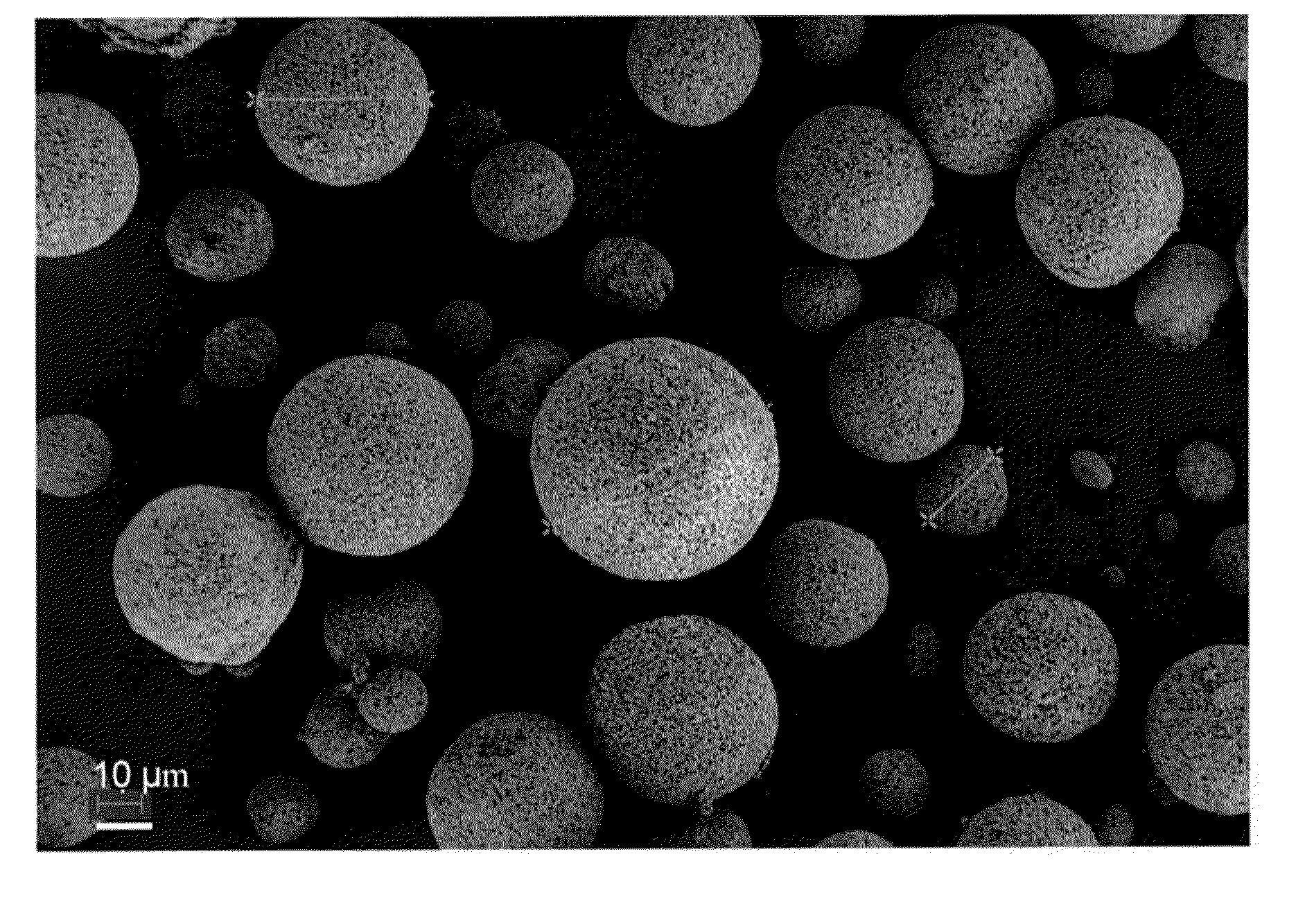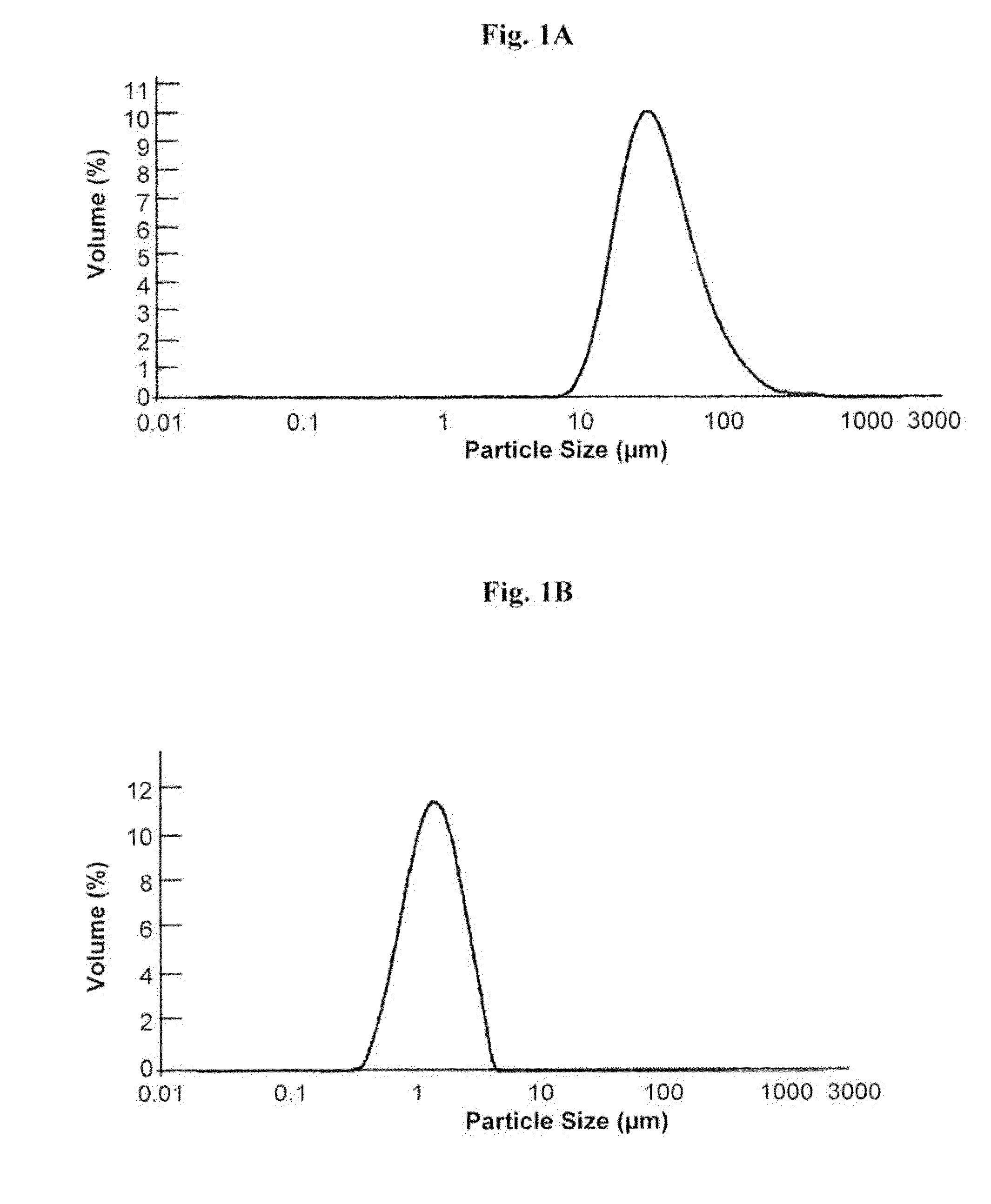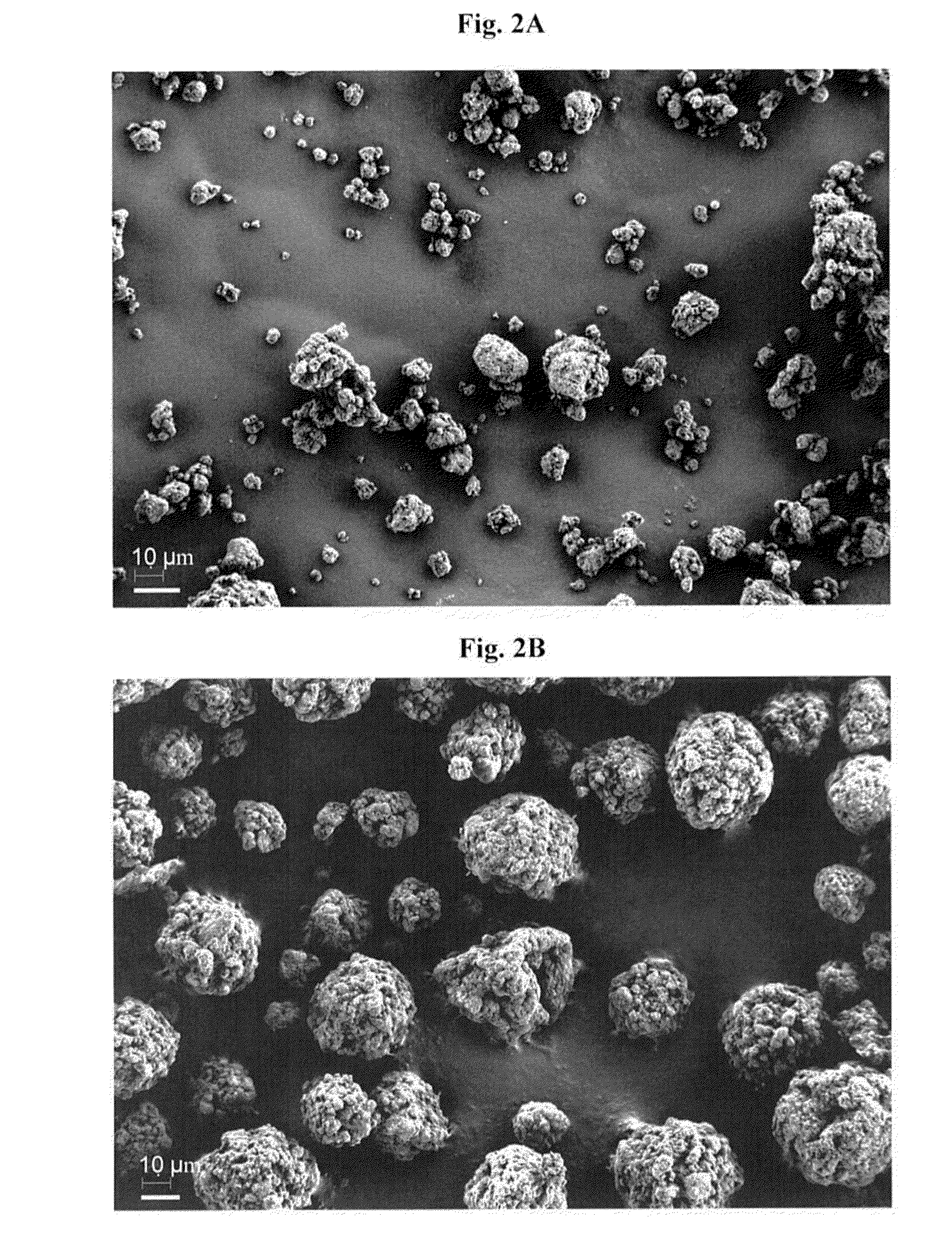Microcapsules comprising black pigments
a technology of black pigments and microcapsules, which is applied in the field of microcapsules comprising black pigments, can solve the problems of carbon black not being permitted for cosmetic use, difficult to handle carbon black, and large aggregate of carbon black particles
- Summary
- Abstract
- Description
- Claims
- Application Information
AI Technical Summary
Benefits of technology
Problems solved by technology
Method used
Image
Examples
example 1
General Procedure for Preparation of Microcapsules Containing a Black Pigment
[0063]The microcapsules are prepared by the solvent removal method comprising:
[0064]a) preparing an organic solution of the black pigment with a wall-forming polymeric material selected from a acrylate, a polymethacrylate, a cellulose ether, or a combination thereof, in ethyl acetate, optionally with one or more additives such as wetting agents, and homogenizing or low shear mixing / stirring until a homogenate suspension is obtained;
[0065]b) mixing said homogenate suspension with an aqueous solution containing an emulsifier, under low or high shear stirring, to form an emulsion;
[0066]c) adding to the formed emulsion an excess amount of water to initiate extraction of the organic solvent from the emulsion, thus obtaining microcapsules;
[0067]d) optionally leaving for a time sufficient to allow sedimentation of the microcapsules; and
[0068]e) isolating said microcapsules by filtration, subsequently washing with ...
example 2
Preparation of Microcapsules Containing Carbon Black
[0069]2.1 Preparation of Organic Phase (“Master Batch”):
[0070]An organic phase (herein called “master batch” (MB)) was prepared by gradually adding 25 g of the wall-forming polymer poly(methyl methacrylate-co-methacrylic acid), under stirring, into 566.7 g of ethyl acetate, heating to 50° C. and stirring well until the mixture was homogeneous (about 10 min). The polymer solution was cooled to 25° C. The wetting agent hydrogenated polyisobutene (25 g) was added to this mixture and it was further stirred for about 10 min. Carbon black pigment was then gradually added to the mixture and it was stirred for 1 min. The mixture was then homogenized for 2 min to obtain a homogenate suspension (composition detailed in Table 1).
TABLE 1Organic phase (MB) compositionMaterialLoading component of MB (g)-(for 100 g)1poly(methyl methacrylate-co-25methacrylic acid)2Hydrogenated Polyisobutene253Carbon Black pigment504Ethyl Acetate566.7 (removed)
[007...
example 3
Preparation of Microcapsules Containing a High Percentage of Carbon Black Pigment
[0078]3.1 Preparation of Master Batch:
[0079]A master batch was prepared by gradually adding 2 g of the wall-forming polymer poly(methyl methacrylate-co-methacrylic acid), under stirring, into 566.7 g of ethyl acetate, heating to 50° C. and stirring well until the mixture was homogeneous (about 10 min). The polymer solution was cooled to 25° C. Butylene glycol cocoate (10 g) was added to the polymer solution and it was further stirred for about 10 min. Carbon black pigment (88 gr) was then gradually added to the mixture and it was stirred for 1 min. The mixture was then homogenized for 2 min to obtain a homogenate suspension (composition detailed in Table 5).
TABLE 5MB composition with high loading of carbon blackLoadingcomponent of MaterialMB (g)-(for 100 g)1poly(methyl methacrylate-co-2methacrylic acid)2Butylene glycol cocoate103Carbon Black pigment884Ethyl Acetate566.7
[0080]3.2 Preparation of the Emuls...
PUM
| Property | Measurement | Unit |
|---|---|---|
| mean particle size | aaaaa | aaaaa |
| mean particle size | aaaaa | aaaaa |
| mean particle size | aaaaa | aaaaa |
Abstract
Description
Claims
Application Information
 Login to View More
Login to View More - R&D
- Intellectual Property
- Life Sciences
- Materials
- Tech Scout
- Unparalleled Data Quality
- Higher Quality Content
- 60% Fewer Hallucinations
Browse by: Latest US Patents, China's latest patents, Technical Efficacy Thesaurus, Application Domain, Technology Topic, Popular Technical Reports.
© 2025 PatSnap. All rights reserved.Legal|Privacy policy|Modern Slavery Act Transparency Statement|Sitemap|About US| Contact US: help@patsnap.com



